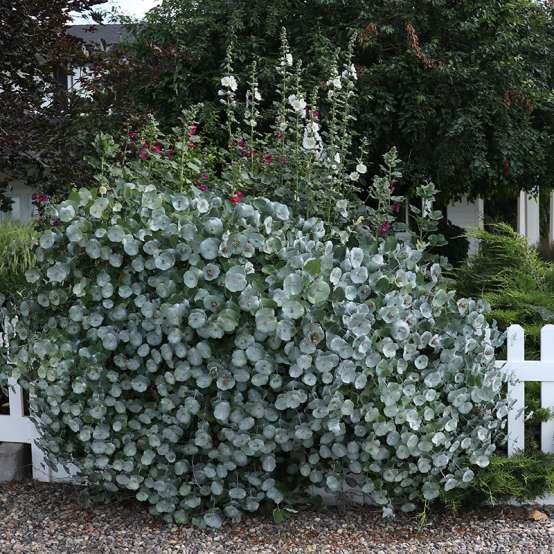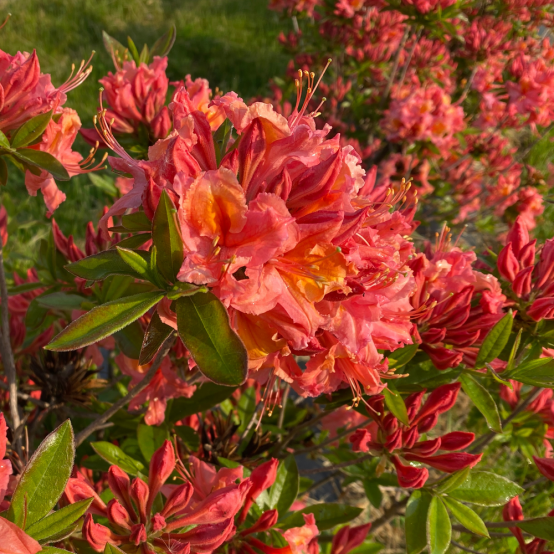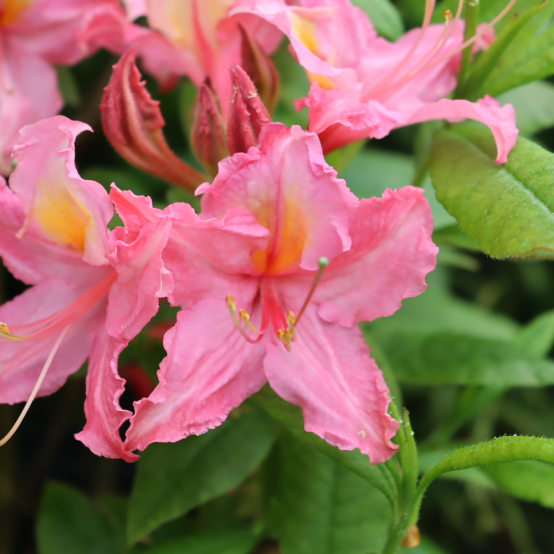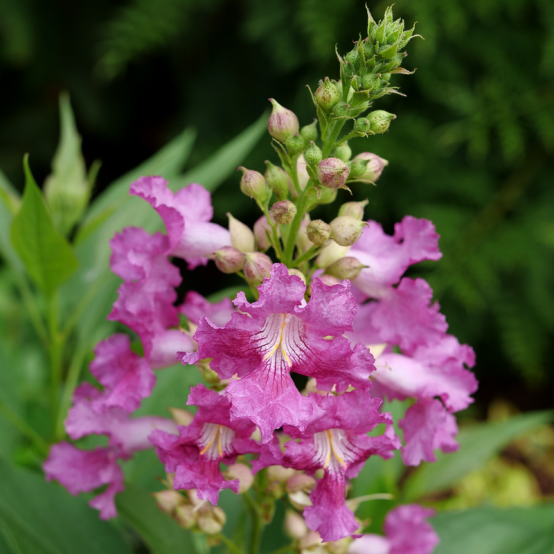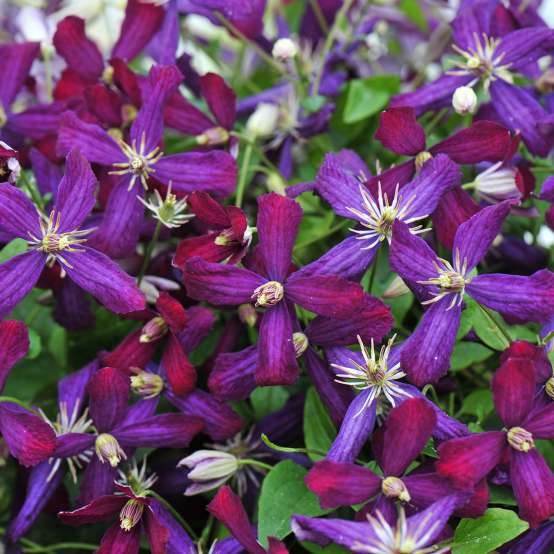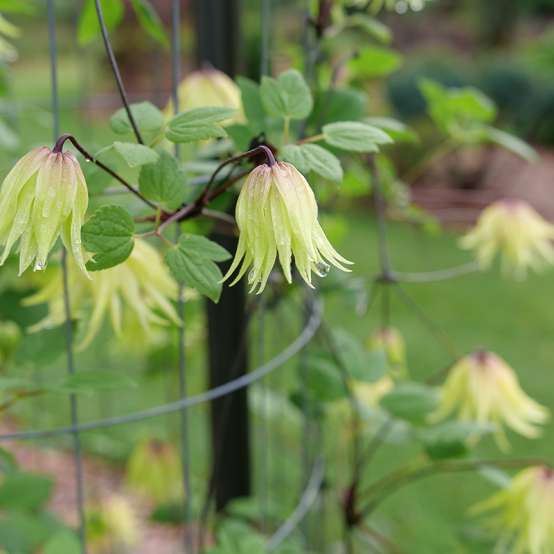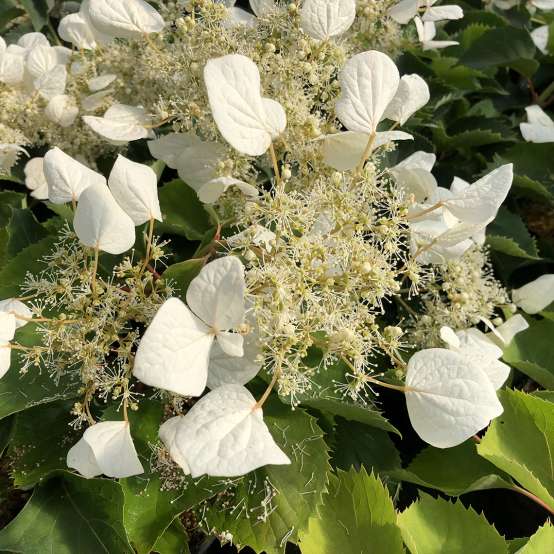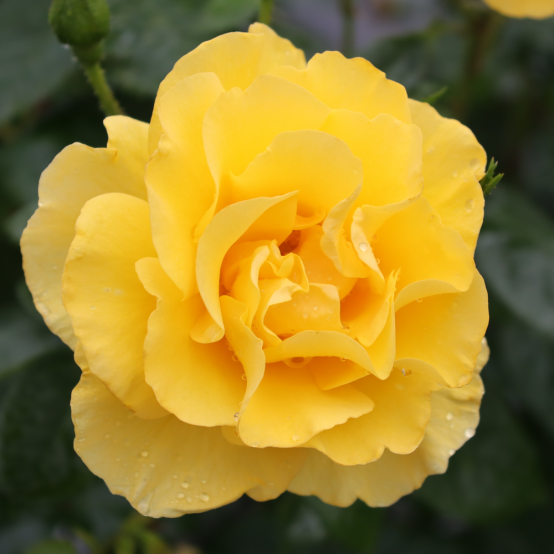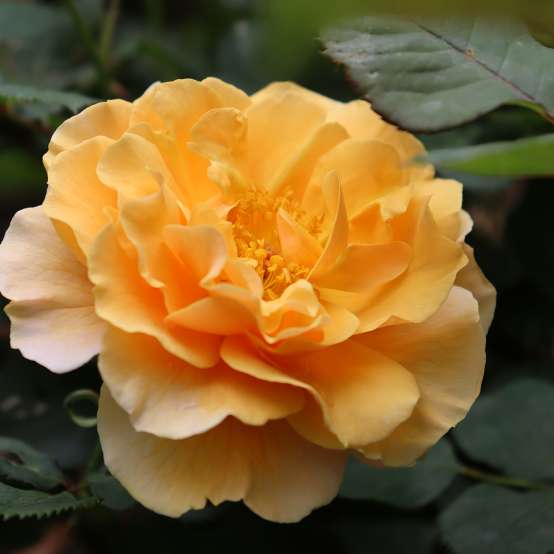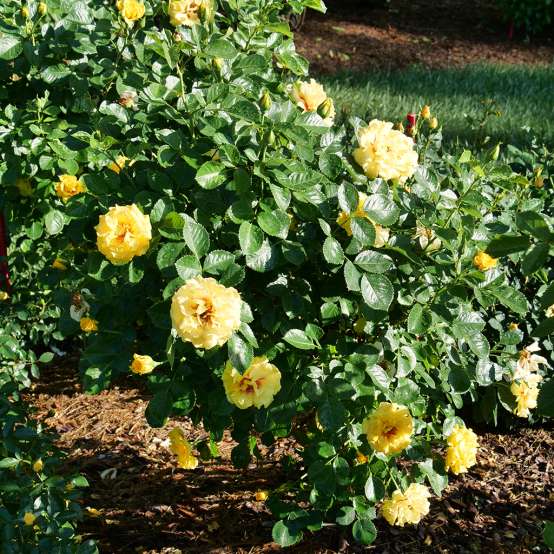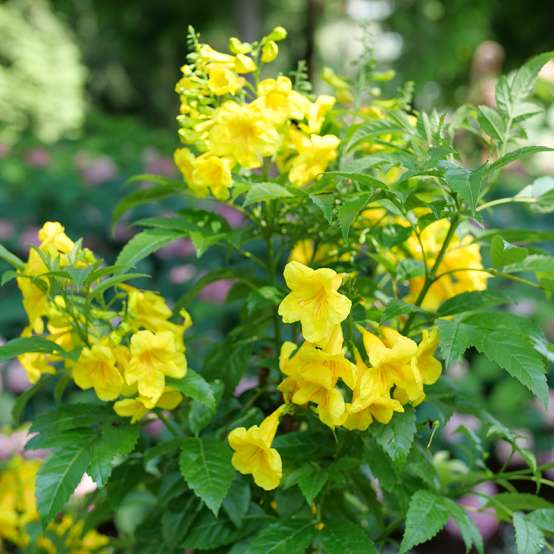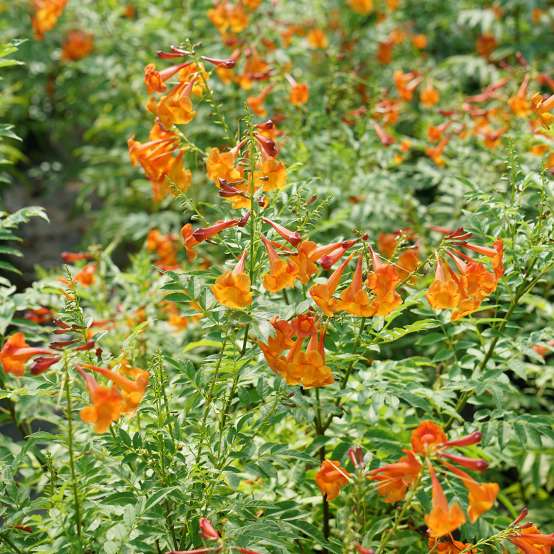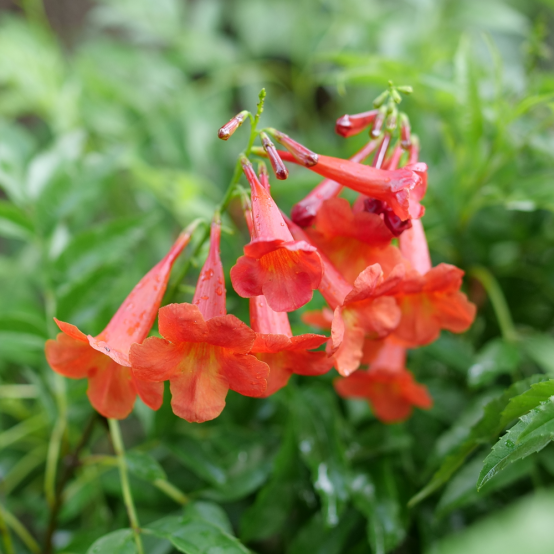Clicking the following controls will change the main image displayed above.
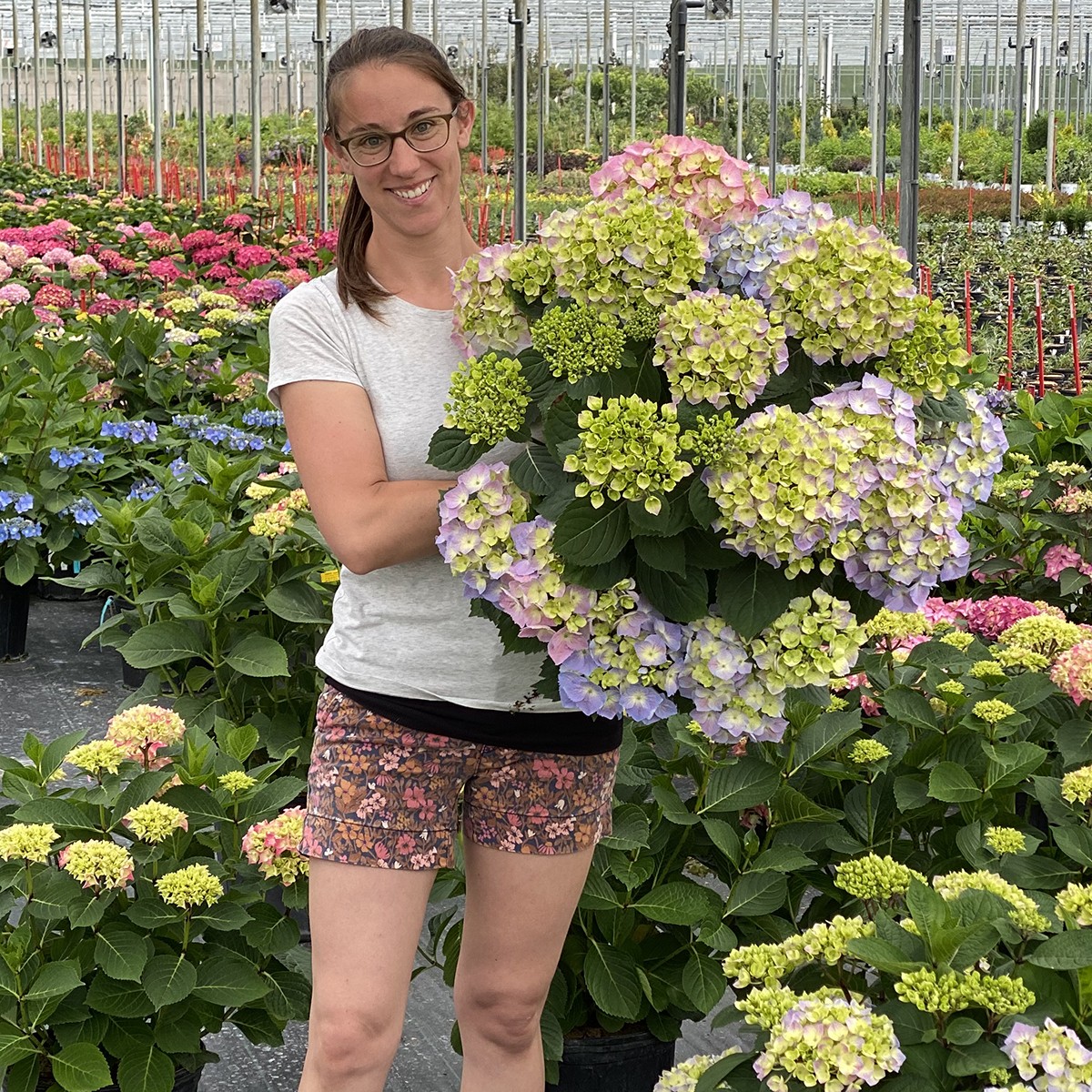
Meet the Breeder
Megan Mathey
Grand Haven, Michigan
DRESSED TO THRILL®

Crossvine
Bignonia capreolata
'SMNBFW'
PP#36,747
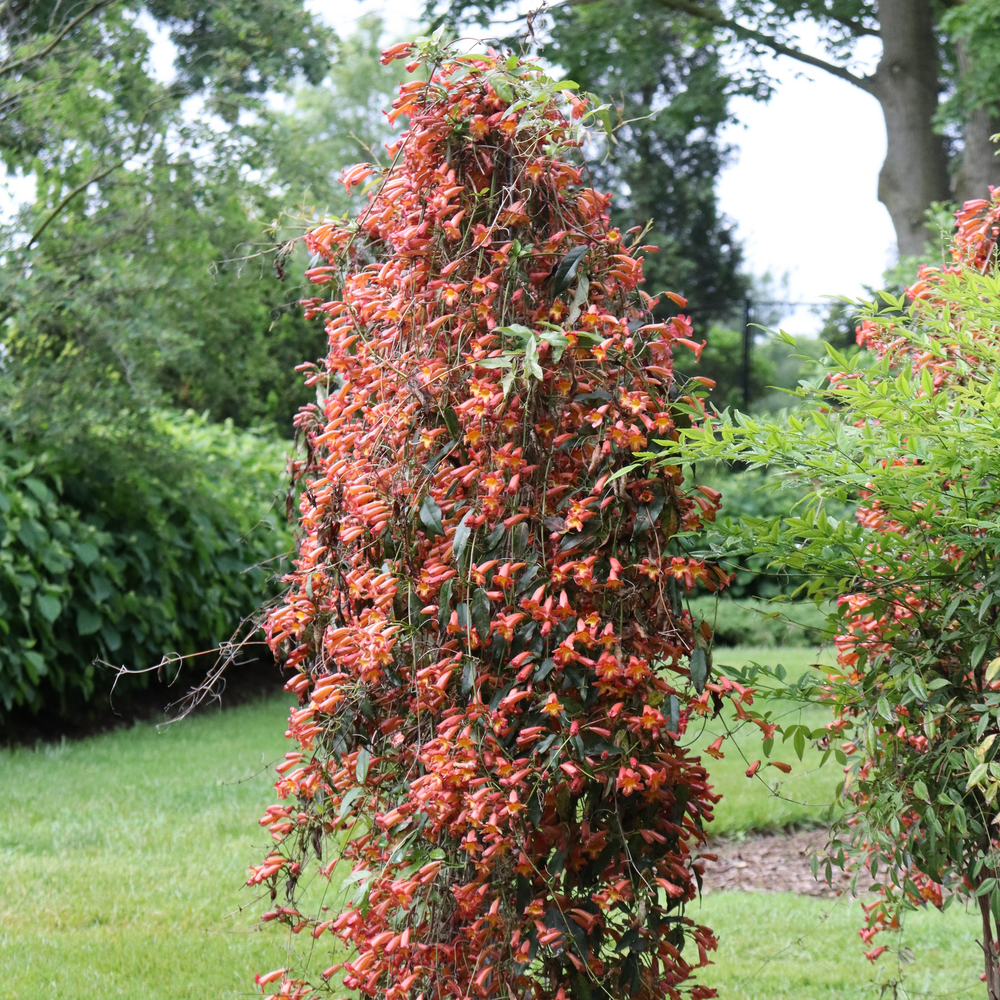
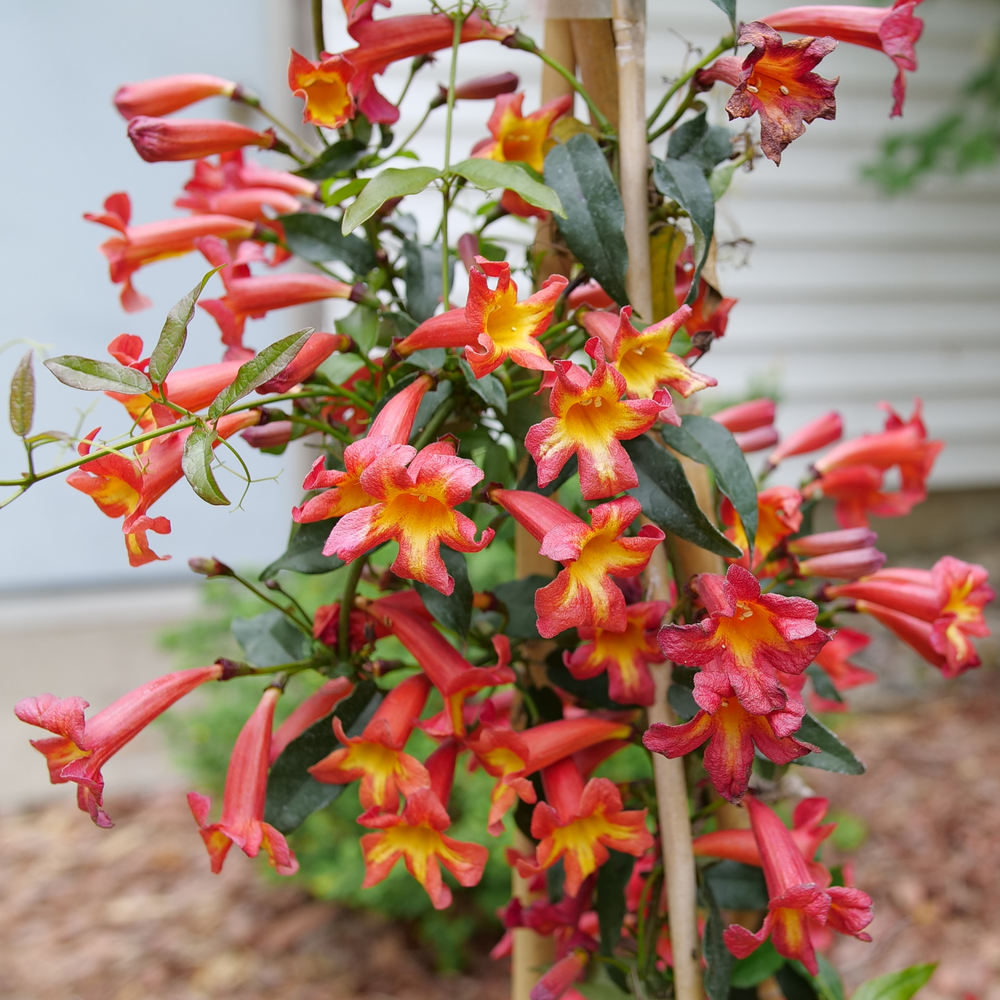
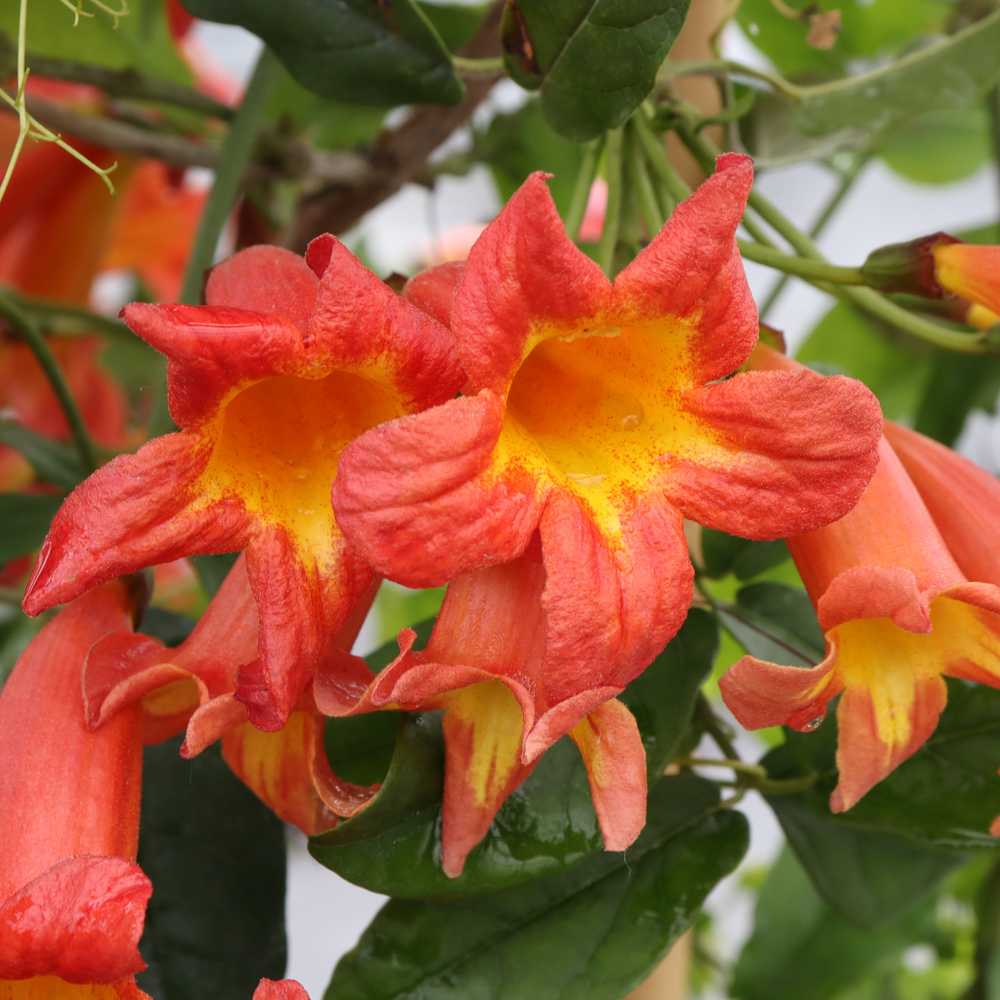
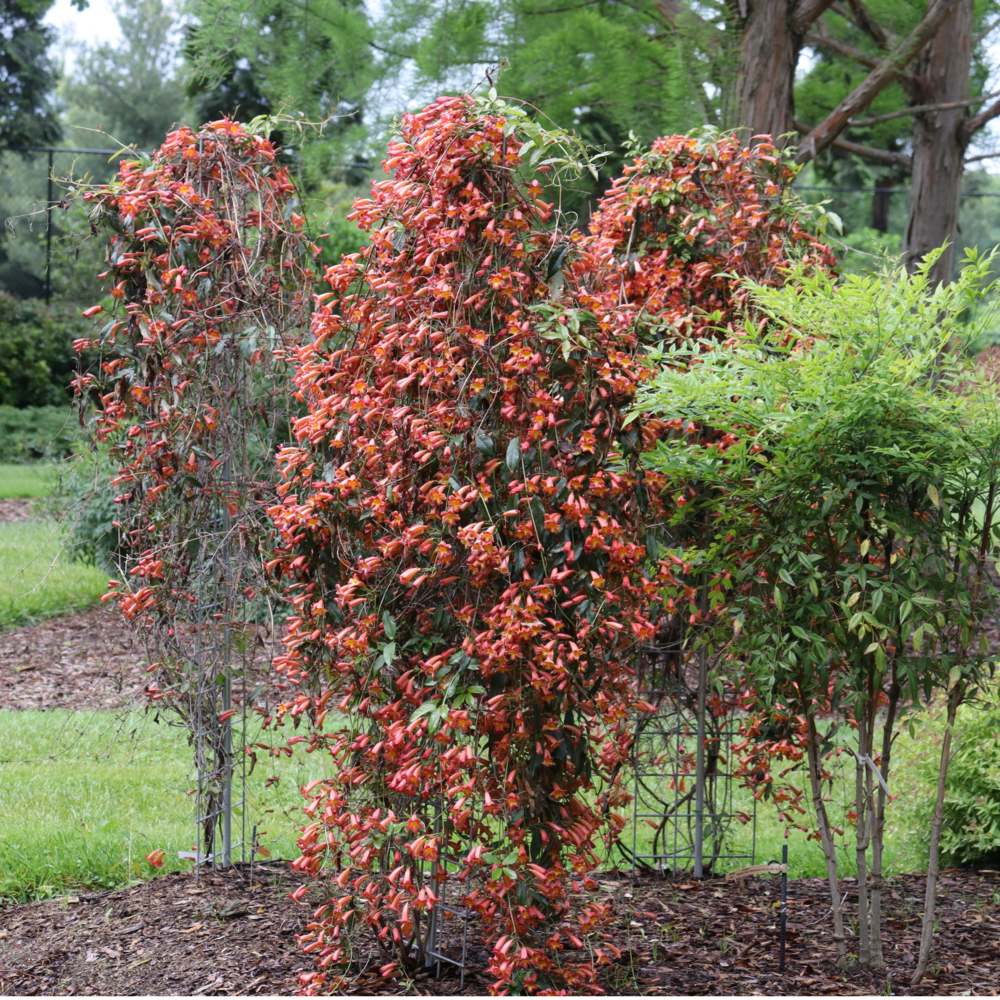
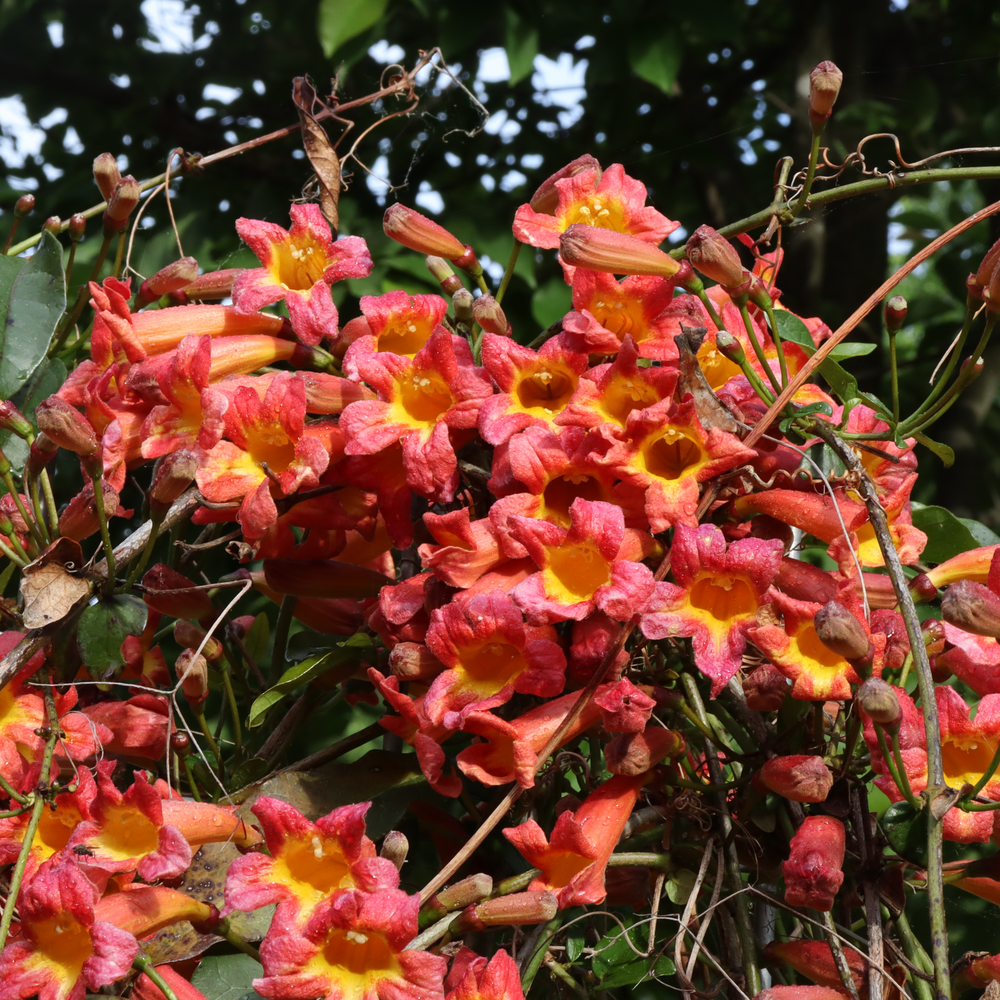
- Native
- Evergreen
- Attracts Pollinators
- Description
Dressed To Thrill crossvine (Bignonia capreolata) is colorful, extremely floriferous, and amazingly adaptable! This selection of our North American native crossvine transforms fences, walls, and trellises into a wall of flowers, climbing structures by tendrils. Orange-red trumpet-shaped flowers with bright yellow eyes enliven landscapes from spring through summer and provide a welcome food source for hummingbirds. Native from Ohio down to Texas, this semi-evergreen vine is adaptable to most any soil and exhibits excellent heat and drought tolerance.
Dressed to Thrill crossvine can make a welcome alternative to trumpet vine (Campsis radicans), especially in cooler climates where it will be less rambunctious but still attract hummingbirds and butterflies. Climbs by tendrils so will require a sturdy support with texture and/or smaller pieces so that it can succesfully ascend the structure.
- USDA Zone
- 6 - 9 (-10°F/-23.3°C)
- Exposure
- Full sun, Part sun
- Height
- 12-30'
- Width
- 6-9'
- Finish Time
- 1 season
- Type
- Evergreen
- Bloom Time
- Spring into summer
- Flower Color
- Orange, Red
- Foliage Color
- Green
- Liner Sizes
- 2 1/4", 4", Quick Turn
General Care
Soil
Any well-drained soil will do.Pruning
Little required; blooms on old and new wood so if pruning, do so immediately after the main spring bloom.Uses
Specimen, flower gardens, wild gardens, native plant gardens, pollinator gardens; covering mailboxes, railings, trellises, pergolas, etc.Growing Tips
Climbs by tendrils that wrap around the structure; woody vine will need sturdy support.Features: Evergreen, Drought tolerant, Heat tolerant, Vine
Filters: Botanical genus: Bignonia , Common name: Crossvine , Retail program: Proven Winners® ColorChoice®, USDA Zone 6, USDA Zone 7, USDA Zone 8, USDA Zone 9, Exposure: Full sun, Exposure: Part sun, Bloom time: Spring, Orange flowers, Red flowers, Green foliage
Features: Evergreen, Drought tolerant, Heat tolerant, Vine
Filters: Botanical genus: Bignonia , Common name: Crossvine , Retail program: Proven Winners® ColorChoice®, USDA Zone 6, USDA Zone 7, USDA Zone 8, USDA Zone 9, Exposure: Full sun, Exposure: Part sun, Bloom time: Spring, Orange flowers, Red flowers, Green foliage

